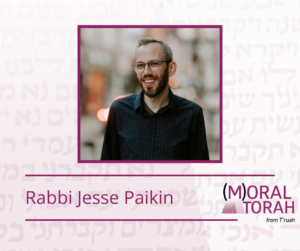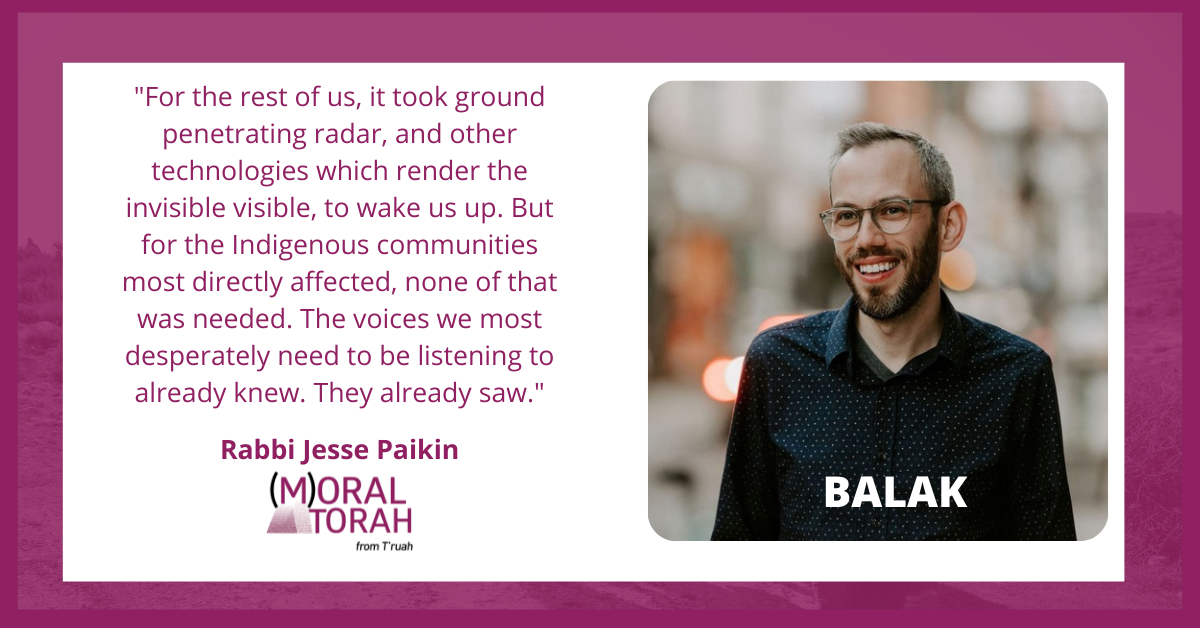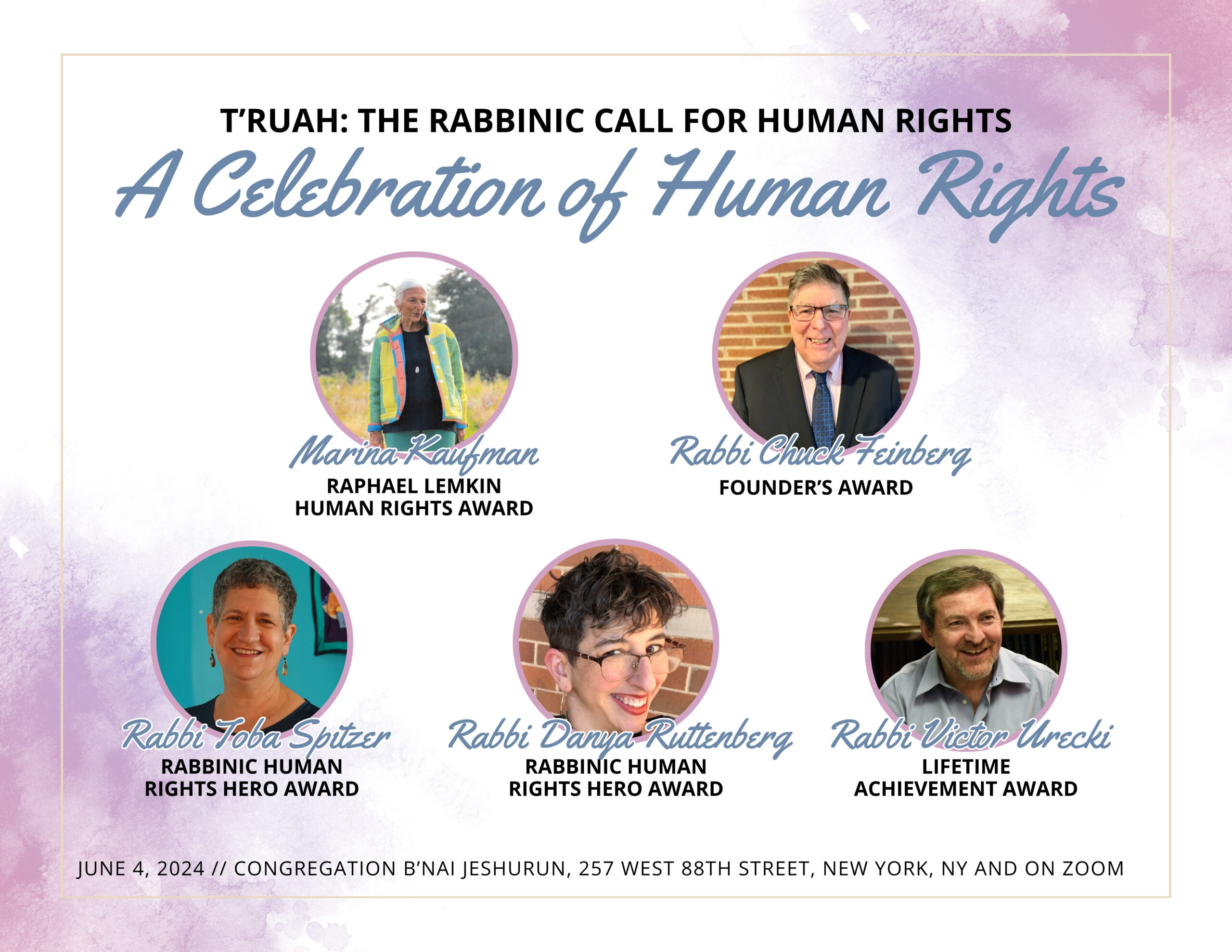A D’var Torah for Parshat Balak by Rabbi Jesse Paikin
In early June, the Tk’emlúps te Secwépemc First Nation revealed that the remains of 215 children had been found in a mass grave at the site of the former Kamloops Indian Residential School in British Columbia. The news prompted widespread shock, grief, and anger across Canada and parts of the world.
Shock and grief for the unknown stories of these 215 souls, some as young as three years old: What were their names? When did they live? When and how did they die? Did their parents know of their cruel demise? Who was with them during their last moments?
And anger for the questions that haunt us: Who will accept responsibility? Why are we only discovering this now?
I understand the horror at a mass grave filled with the remains of children; children who had been forcibly removed from their homes and subject to cultural genocide. I understand the longing pain that reaches out for recognition; the anguish that cries out to those accountable: “Shut your mouth, and just listen.”
But the truth is, I also appreciate that our brains aren’t naturally wired to understand what a mass grave looks like. We of course know that the death of children due to a colonial program of neglect and abuse is abhorrent. But can we comprehend the machinery of death on this scale?
Sign up to receive (M)oral Torah in your inbox each week.
I think most people, understandably, just don’t have the emotional bandwidth. So it’s paralyzing. Most of us, thankfully, haven’t grappled with what it feels like to confront a death pit with our own eyes.
I have. I’ve stood on the edge of the pits filled with the remains of tens of thousands of my people. I’ve gazed into the mass graves in the backyard of my ancestors’ homes, where 70,000 were massacred.
And if you’ve undertaken pilgrimages to Eastern Europe on that tragic Jewish phenomenon of Dark Tourism, then you’re likely also among those few who have grappled with that same devastating combination of shock, grief, and anger.
It’s a mental and emotional muscle nobody should have to flex.
One of the things that has shaken me most in listening to Indigenous voices in the wake of this revelation is the repeated refrain that this was not a surprise. It wasn’t a matter of if, but a matter of when. They saw this kind of news coming.
For the rest of us, it took ground penetrating radar, and other technologies which render the invisible visible, to wake us up. But for the Indigenous communities most directly affected, none of that was needed. The voices we most desperately need to be listening to already knew. They already saw.
What makes the unseen seen? What makes the unknown known? And what do we do once we know and see?
These are questions that Parshat Balak throws quite literally in our face. In one of the most vivid scenes in the Torah, the magician Bilaam – dispatched by an enemy king on a nefarious mission to curse the Children of Israel – comes face-to-face with a messenger of God. Famously, Bilaam – due to ignorance or wilful blindness – could not see the messenger with his own eyes; only his donkey could. It ultimately takes an act of God to open Bilaam’s eyes:
Then the ETERNAL opened Bilaam’s eyes, and he saw the angel of the ETERNAL standing in the road with his sword drawn. So he bowed low and fell facedown. (Numbers 22:31)
Much rabbinic commentary focuses on Bilaam’s ignorance and the symbolism of the donkey as the one who could sense God’s presence. But for a moment, I want to extend Bilaam some empathy.
Find more commentaries on Parshat Balak.
We can understand that it’s hard to see the things we’d rather not. We can even have compassion for the depths of strength it takes to confront our moral responsibility for those things we’d rather remain buried – it literally takes the power of God to open Bilaam’s eyes.
But then there’s a shift. Once Bilaam’s eyes are open, he accepts responsibility. He confronts the truth and moves for reconciliation: “I erred because I did not know that you were standing in my way,” (Numbers 22:34) he confesses to God. He moves from a program of cursing to one of blessing.
Rashi’s commentary makes the upshot of this shift to responsibility abundantly clear: In observing that Bilaam – a non-Israelite foreigner – benefits from God’s direct intervention, he asks a frankly astonishing question: “Why does the shechinah rest upon so wicked a person?” (Rashi on Numbers 22:5)
His answer: so that nobody anywhere might ever use the excuse: “If only I had known, I would have changed for the better.” When the unknown becomes known, can we have the courage to confront what we’d rather keep invisible? This moment in Torah provides an unambiguous example of how, once our eyes are open to the truth, it cannot be ignored. All the more so, it must be acted upon.
 We’re staring into a grave right now. Despite our understandable desire to protect ourselves emotionally by not grappling with the implications of the pain, the truth cannot be reburied. We have to keep looking into the still-open wounds.
We’re staring into a grave right now. Despite our understandable desire to protect ourselves emotionally by not grappling with the implications of the pain, the truth cannot be reburied. We have to keep looking into the still-open wounds.
What will we do as our eyes continue to open to what, in truth, has always been in front of us?
This is no longer a moment when we can escape by saying: “If only I had known, I would have changed for the better.”
Rabbi Jesse Paikin, an alumnus of the Jewish Emergent Network Rabbinic Fellowship, is a teacher of Talmud and mussar. He is currently completing a residency in Spiritual Care at Toronto’s Mt. Sinai Hospital.


